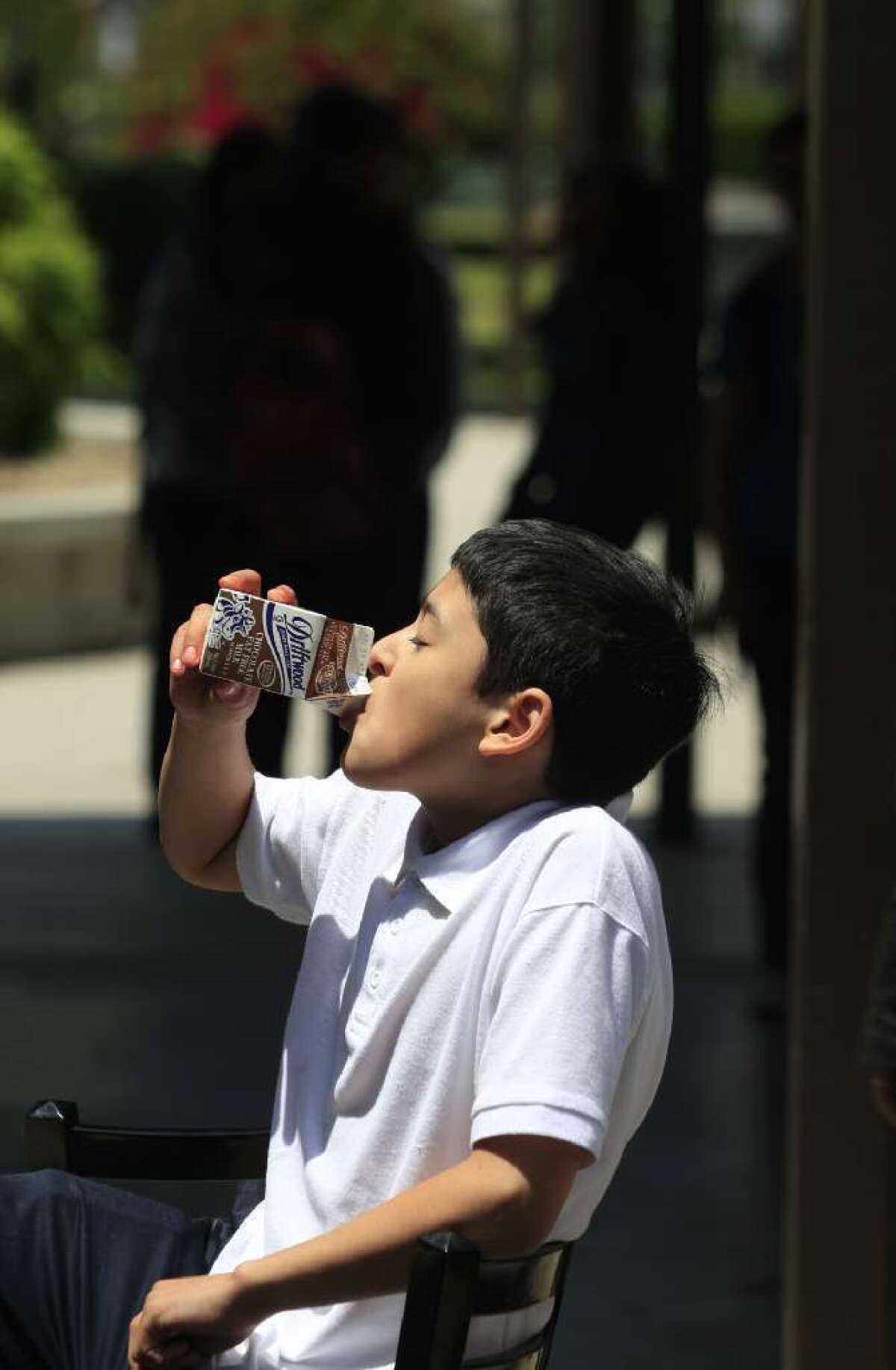Removing chocolate milk from schools caused plain milk to be wasted

- Share via
Removing chocolate milk from school cafeterias has been promoted over the last few years as a way to reduce the sugar kids consume and decried as a sure way to keep kids from getting the nutrients in milk.
Both might be the case, researchers at Cornell University say.
“On average, milk sales drop by 10%, 29% of white milk gets thrown out, and participation in the school lunch program may also decrease,” reported Andrew Hanks, research associate at Cornell’s Dyson School of Applied Economics and Management.
Getting rid of chocolate — or strawberry — milk may reduce calorie and sugar consumption, but students also consumed less protein and calcium, Hanks and colleagues said in a study published this week in the online journal PLOS One.
But all is not lost. One of the researchers, who has spent a lot of time looking at how students choose what to eat in the school cafeteria, said there are ways to get students to choose white milk.
“Instead of banning chocolate milk, make white milk appear more convenient and more ‘normal,’” said Brian Wansink, director of Cornell’s Food and Brand Lab. Some easy solutions can increase white milk sales by at least 20%, he said.
Among those solutions are: Keep at least some white milk in all beverage coolers; make white milk at least a third of all visible milk in the cafeteria; put white milk in front of other beverages; and bundle white milk with all “grab and go” meals as the default beverage.
The researchers looked at what happened in 11 Oregon elementary schools when flavored milk was removed. What they found was that total milk sales fell by nearly 10%. Kids bought more white milk — 161 cartons a day more — but they tossed almost 30% of it in the trash.
And 6.8% fewer students ate school lunches; other factors were also involved in that change, but the researchers called it consistent with “psychological reactance.”
School districts all over the country, trying to do their part to combat obesity, have been debating whether to serve flavored milk, which generally is nonfat milk. Chocolate milk can have twice the sugar of white milk. (Other research has questioned whether whole milk might be a better alternative, in part because of the sugar.)
Los Angeles Unified School District is among those that have dropped flavored milk, and despite a decline in sales and its share of complaints, will not restore it, said David Binkle, the food service chief. Santa Monica schools considered but chose not to remove flavored milk. Some districts have decided to serve it once or twice a week, Hanks said.
Indeed, nearly 70% of the milk in schools is flavored. And two-thirds of the students who take part in the National School Lunch Program, which feeds more than 30 million children a day, choose flavored milk.
District food service programs face a “trilemma,” Hanks said Friday. They have to satisfy students and parents; they have to be solvent; and they have to meet federal regulations. It is, he said, “a very fine line.”
The Oregon schools were part of a district in which about a fifth of people live under the poverty line. The district removed chocolate milk in the 2011-12 school year, and the researchers compared September-October of that year with the same months in the previous year.
“Members of the school district’s PTA were adamantly opposed to offering chocolate milk in the cafeterias, claiming it was as bad as soda,” said Hanks.
And after the study, the district resumed providing chocolate milk, Hanks said.
To measure what was tossed out, the students poured the milk into containers. That total was compared with waste measures from 15 other elementary schools where milk waste had been measured.
Among the changes that might also affect school lunch participation was a move from a five-week to a four-week cycle of meal rotations. Some “bonus” foods, such as cookies and crackers, pickles and whipped toppings, also had been removed. And a vegetable side dish was added every day. A full-price lunch rose 25 cents from $2.25 over the two yeasr too.
Beverage choices also included bottled water and juice.
On the milk question, eliminating chocolate milk means an average decrease of 8 grams of sugar and 37 calories in a student’s lunch; the trade-off is 1 gram of protein and 5 percentage points in the daily recommended intake of calcium, the researchers said. In addition, the researchers noted that their study did not account for whether students compensated for what they didn’t get with milk by eating or drinking other things, either in or after school.
Future research, they said, could consider “how behavioral nudges and triggers that preserve options, such as chocolate milk, and guide students to more healthful choices could lead students to take, and eat, healthier lunches.”
Twitter: @mmacvean







